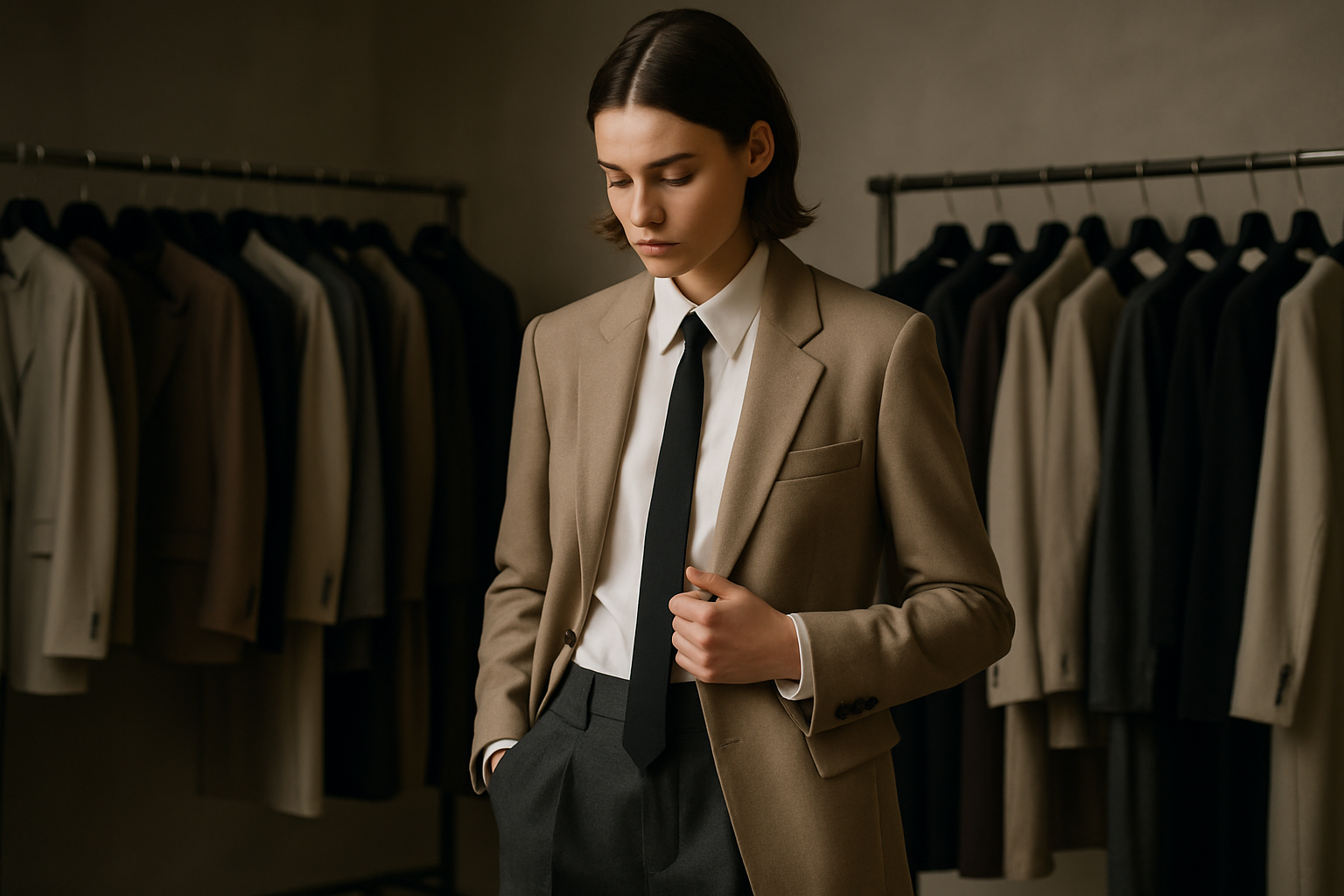Why More Women Over 50 Are Choosing Stylish Alternatives to Jeans
As fashion evolves, so do the preferences of women, especially those over 50 who are seeking both comfort and style. While jeans have long been a wardrobe staple, many women in this age group are now exploring new outfit combinations that better suit their changing lifestyles and bodies.Discover why jeans are taking a backseat and which stylish alternatives are capturing the hearts of women over 50.

As women enter their fifties and beyond, their relationship with clothing often evolves. While jeans have been a go-to choice for decades, many are now seeking alternatives that better align with their current lifestyle, body changes, and personal style preferences. The transition away from denim is not about abandoning casual wear but rather embracing options that offer greater comfort, versatility, and elegance. Tailored trousers, wide-leg pants, dress pants, and even stylish joggers are becoming wardrobe favorites, reflecting a broader cultural shift toward age-appropriate yet fashion-forward dressing.
Several factors contribute to this trend, from physical comfort considerations to the desire for clothing that transitions seamlessly from casual to more polished settings. Understanding why this shift is happening can help women make informed choices about building a wardrobe that truly serves their needs and expresses their personal style.
Comfort Takes Center Stage
One of the primary reasons women over 50 are moving away from jeans is the comfort factor. As bodies change with age, the rigid structure and tight fit of many denim styles can become uncomfortable, particularly around the waist and hips. Traditional jeans often lack the flexibility and breathability that softer fabrics provide, leading to discomfort during extended wear.
Alternatives such as ponte knit pants, stretch twill trousers, and elastic-waist styles offer the structure and polish of traditional pants without the restrictive feel of denim. These fabrics move with the body, provide gentle support, and often feature moisture-wicking properties that enhance all-day comfort. Many women report that switching to these alternatives has eliminated the end-of-day discomfort they experienced with jeans, making them ideal for both active days and relaxed evenings.
Embracing Versatile Alternatives
Versatility is another compelling reason behind the shift. While jeans are undeniably casual, many women over 50 seek clothing that can transition effortlessly between different settings without requiring a complete outfit change. Tailored trousers, dress pants, and culottes can be dressed up with a blazer and heels for dinner or paired with a simple tee and flats for errands.
This adaptability is particularly valuable for women with varied daily schedules that might include volunteer work, social engagements, part-time employment, or caring for family members. Having pants that look polished yet feel comfortable eliminates the need for multiple wardrobe changes throughout the day. Neutral colors like black, navy, gray, and beige in quality fabrics create a foundation that works with countless tops and accessories, maximizing outfit possibilities while minimizing closet clutter.
Layering for Style and Practicality
Layering becomes increasingly important as women age, both for temperature regulation and style expression. Non-denim pants often work better with layered looks than jeans do. The sleeker silhouette of dress pants and trousers creates cleaner lines under longer cardigans, tunics, and blazers, while the varied textures of alternative fabrics add visual interest to outfits.
Wide-leg pants, for instance, pair beautifully with fitted tops and structured jackets, creating balanced proportions that flatter mature figures. Cropped styles work well with ankle boots and can be layered with longer coats for cooler weather. The ability to layer effectively extends the wearability of these pieces across seasons, making them practical investments that deliver year-round value.
Prioritizing Fit and Flattery
Fit challenges are a significant consideration for many women over 50. Body proportions often shift with age, and the standard sizing and cuts of jeans may no longer provide the flattering fit they once did. Gapping at the waist, tightness through the thighs, or unflattering hip emphasis are common complaints that drive women toward alternatives.
Dress pants and tailored trousers often come in a wider variety of fits and rises, allowing for better customization to individual body shapes. Styles with contoured waistbands, strategically placed darts, and thoughtful construction details provide structure where needed while skimming over areas women prefer to minimize. Fabrics with built-in stretch and recovery maintain their shape throughout the day, ensuring a polished appearance from morning to evening. Many brands now offer petite, regular, and tall inseams in their non-denim lines, addressing length concerns that plague many jean shoppers.
Incorporating Modern Prints and Colors
While classic denim comes primarily in shades of blue and occasionally black or white, alternative pants open up a world of color and pattern possibilities. Women over 50 are increasingly drawn to subtle prints, textured fabrics, and rich jewel tones that add personality to their wardrobes without overwhelming their personal style.
Herringbone patterns, subtle plaids, and tone-on-tone textures provide visual interest while remaining sophisticated and age-appropriate. Seasonal colors like burgundy, forest green, and camel offer freshness beyond basic neutrals, allowing women to express their style preferences while maintaining versatility. These options make getting dressed more enjoyable and help create distinctive personal style signatures that go beyond the uniformity of standard denim.
Conclusion
The movement away from jeans among women over 50 represents a thoughtful evolution in personal style rather than a rejection of casual comfort. By choosing tailored trousers, dress pants, and other elegant alternatives, mature women are prioritizing comfort, versatility, and flattering fit while maintaining a polished appearance. These choices reflect confidence in personal style and an understanding that looking put-together does not require sacrificing ease or practicality. As the fashion industry continues to recognize and serve this demographic with better options, the trend toward stylish jean alternatives is likely to grow, empowering women to dress in ways that truly reflect who they are and how they want to feel every day.




